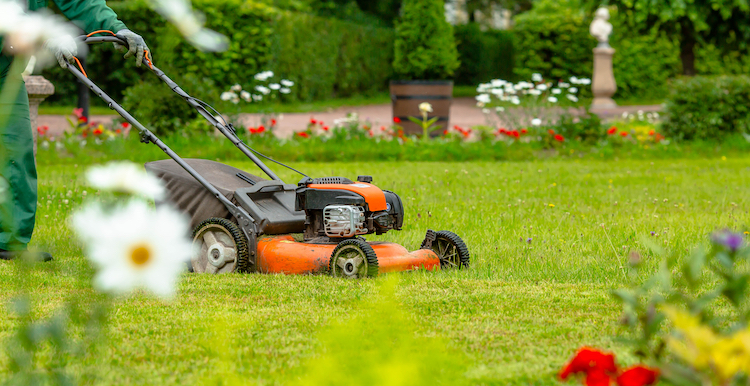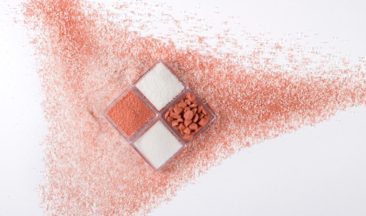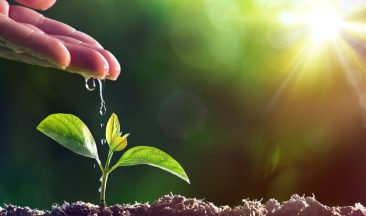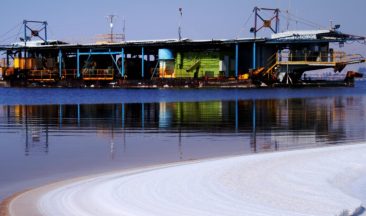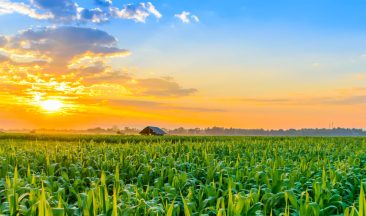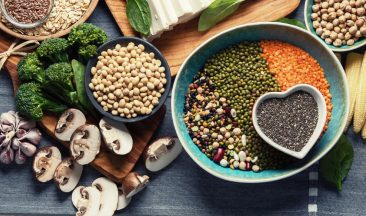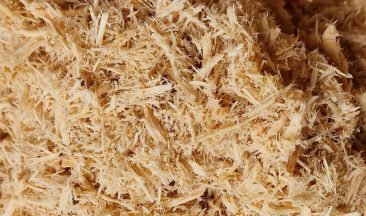It’s important to be aware of some common causes of grass deterioration, know when it’s time to renovate and the appropriate steps, potential pitfalls during the renovation process, how to minimize turf diseases, and some fertilizer solutions that can assist with the lawn and sports turf maintenance process.
Causes of Turf Deterioration
There are several things that can cause turf to deteriorate: high temperatures and drought, weed and/or pest pressure, high traffic, poor turf maintenance, and the wrong grass species being planted are some of the most common.
High temperature and drought
Droughts, or significant periods of extremely dry weather due to a lack of water, can last for a few weeks or years. This decreased supply of water and reduced soil moisture underneath the grass results in an increased demand for water by the plants in order to keep physiological processes in balance. It’s common during these periods of minimal water and high temperatures for lawns to begin to die and turn brown.
Weed and/or pest pressure
Weeds, which are simply any undesirable plant in an area, not only compete with the turf for light, water, and nutrients but typically take away from the aesthetic of the lawn. Over time, weeds can overrun the area and result in deterioration.
A brown spot on the turf isn’t necessarily a sign of drought – it could be from a specific insect pest. It’s unrealistic to attempt to remove all pests from your lawn (very resource-intensive, short-lived, and not sustainable), so it’s important to properly identify whatever pest is present and at what population levels, to determine management decisions.
High traffic
In areas with lots of foot traffic (from people, pets, or vehicles), the soil becomes compact and limits the amount of water that can soak into the ground and ultimately get to the grassroots. This soil compaction can also make it difficult for the plants to establish roots and can result in areas of poor germination or dead grass. This is an extremely common problem with sports fields.
Poor maintenance
By not mowing or fertilizing your lawn regularly (or properly), can actually damage the grass and make it more difficult for it to recover during times of stress. Maintenance can also mean irrigation or weeding if that’s what your lawn requires. By not paying attention and scouting the lawn regularly, you won’t know what maintenance is needed and will end up seeing turf deterioration.
Wrong grass species
Just because you like how a grass species looks, doesn’t mean that it’s the best suited for your turf. It’s important to select a turfgrass species that is adapted to your specific environmental conditions, intended use, and maintenance level. Grasses all vary in their tolerance and suitable soil moisture, pH, and temperature, and that needs to be taken into consideration when evaluating deteriorated turf. It’s possible that a deteriorated lawn is due to an incorrect grass species in your environment, and no amount of irrigation or fertilizer can change that.
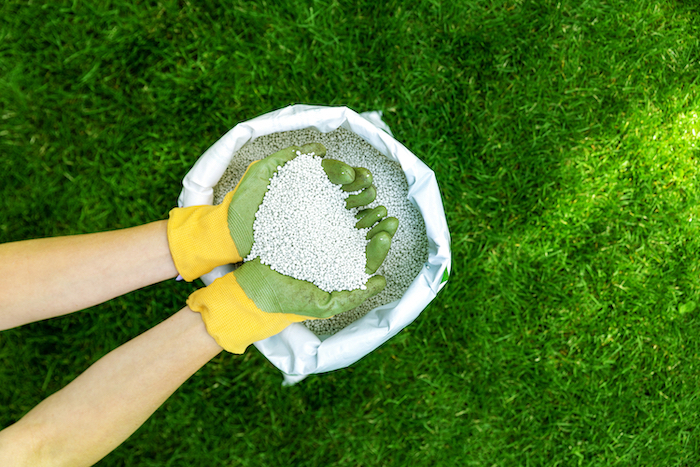
When to Renovate Turf
We asked Dr. Andy Owen, International Technical Manager for Turf and Landscape at ICL, to share tips on how and when to renovate turf.
Dr. Owen tells us “when it comes to renovating turf or a lawn, the first thing is to evaluate the current status and figure out what the end goal is. Look at the surrounding walkways and attempt to invigorate the grass by providing ample space to grow, or introducing new seed into the sward (the ground area that’s covered in grass) by reseeding. The extent of the renovation will depend upon what is required to improve the current state and the level of lawn quality you wish to achieve.
If you find that there are smaller sections of the lawn that have problems, it’s possible to renovate just that patch. If there are issues throughout the entire lawn, it may be in your best interest to completely renovate and begin from scratch.
In terms of timing for a turf renovation, the ideal time for a lawn renovation is in the spring or fall. You will want to avoid periods of most turf stress through the summer (like droughts) but the grass seed still requires warm soil temperatures for seed germination and, hopefully, some rainfall (or irrigation) to allow the new seed to germinate and establish.”
Steps to Renovate Turf
Dr. Owen mentions that “the general process of turf renovation includes some physical action to open the surface of the sward; whether that’s raking, scarification, or spiking and the removal of the debris. This is then followed by overseeding using a good quality grass seed mix, for example from the Landscaper Pro range, and supporting it with the proper fertilizer nutrition, such as the Landscaper Pro fertilizer range or other advanced fertilizers.”
There are other cultural practices that can assist in turf renovation, such as irrigation and mowing. Irrigation helps the grasses keep physiological processes in balance and develop strong root systems. Mowing to the proper height also helps keep the root system healthy, ensures that all grass blades are getting ample sunlight and nutrients, and minimizes weed growth.
Pitfalls to Avoid When Renovating a Lawn
Dr. Owen also says that “A good quality lawn requires regular maintenance and upkeep, and an annual renovation should be part of the program.
Keeping on top of the turf maintenance will provide the best quality. If you are selecting well-performing grass seeds and fertilizers, try to apply them at the manufacturer’s recommended rates and make sure you have space for aftercare.
New grass seed needs regular irrigation and rainfall to provide the best chance of germination and establishment – it’s important to not let the seed dry out after application. With sports turf maintenance, make sure you give the new grass seed time to develop strong roots before subjecting it to high traffic conditions.”
How to Minimize Turf Diseases
Turf diseases, like all diseases, require a host (in this case turf grass that is susceptible to the disease), a favorable environment (conditions that favor the disease), and the presence of the disease or pathogen. While you can’t control the weather, you’re able to control the practices that you implement, such as mowing and fertilization, which help reduce disease.
Following the recommended mowing height will help your turf resist diseases. Removing too much of the grass blade can actually increase the plant’s susceptibility to diseases by depleting food reserves in the plant and limiting its ability to recover from stress or injury.
Proper fertilizer application is an extremely important aspect of lawn maintenance. Fertilizer improves grass growth, which positively affects the plants’ ability to recover under times of stress. The specific application amounts of fertilizer depend on the soil type, time of the year/ season, and specific needs of the grass type.
By inspecting your lawn weekly, you’ll be able to notice problems as they arise and act quickly to determine the cause/solution before it’s too late.
More on the subject:
eqo.s®: A Revolutionary Sustainable Turfgrass Solution by ICL
ICL’s Surprising Connection to World Football
eqo.x: ICL’s Latest Sustainable Innovation for Controlled Release
Fertilizers
ICL’s Solutions for Turf and Lawn Renovation
“ ICL offers a full range of quality grass seed and turf fertilizers for the landscaper looking after customer lawns. Some of these products have the same technology used by the very best sports pitches and golf courses in the world and can help you achieve the very best quality lawn.” Properly fertilizing a lawn can help with healthy growth, regeneration, and water balance.
ICL’s R&D team has developed unique products that are tailored to the needs of customers – those with new or renovated lawns, turf grass under extreme temperatures, grass that receives little to no sunlight, and more!
With a collection of mineral fertilizers, organic fertilizers, organo-minerals, and biostimulants, ICL is dedicated to effective, safe, and sustainable products to achieve the perfect grass.
